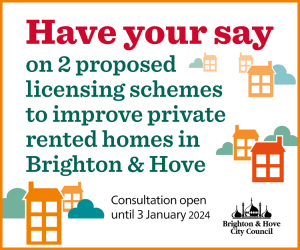Opinion
Fire safety developments in residential buildings
The tragic loss of 72 lives in the Grenfell Tower disaster over 4 years ago brought fire safety in high rise residential buildings (HRRB) into sharp focus. The rapid spread of flames externally was a result of failings to the external wall system ACM and insulation cladding. The ongoing public inquiry has exposed serious failings in the construction and regulation of fire safety in HRRB and other buildings. Householders, whether owner occupiers or tenants should expect to be safe in their homes. This is not always the case due to no fault of their own.
Since Grenfell Tower there have been other recent non-fatal disasters in medium rise blocks of flats and student accommodation including The Cube, Bolton in November 2019 (read here) where the building failed to perform as expected and in Barking, London (read here and here) where a barbeque on a wooden balcony may have led to the blaze. Both these blocks were under 18m in height and did not have ACM cladding however the fires were serious causing damage and destruction.
The housing regulation function across the UK is devolved with different approaches in England and Wales to that in Scotland and NI. There is a dual approach to fire safety regulation in common parts of blocks of flats and Houses in Multiple Occupation (HMOs) in England and Wales, between Fire and Rescue Services and Local Housing Authorities. Historically, there has been a lack of clarity in the law which may have led to confusion, and in combination with limited resources resulted in missed opportunities to improve the fire safety in multi occupied buildings particularly concerning the responsibility for leaseholders flat front door, balconies, and the external cladding.
The Governments response to these incidents was a review of fire and building safety and have made legislative changes – the Fire Safety Act 2021 and the Building Safety Bill.
Fire Safety Act 2021
The Fire Safety Act 2021 is now law amending the Regulatory Reform (Fire Safety) Order 2005, making it clear that in the case of buildings containing 2 or more residential dwellings the external wall system, balconies and individual entry doors of flats are defined as common parts must be assessed for fire safety by the Responsible Person, usually the building owner or manager depending on an agreement between the parties. This removes any doubt who is responsible for assessing the suitability of flat doors and which is the correct enforcing authority.
An immediate question is, if the Fire and Rescue Service are responsible for enforcing the safety of balconies how will they inspect them as fire officers do not have authority to enter a residential flat? Only a local Council Officer has that power. This highlights the need for Local Housing Authorities and Fire and Rescue Services review the joint fire safety protocol to remove any problems with enforcement.
The Act is designed to allow for further regulations to be made which will not require a further Act of Parliament but will incorporate the recommendations from the Grenfell Inquiry. This may include regular lift inspections; review of evacuation plans and clear fire safety instructions to residents. The Act is not height dependent meaning any building with two sets of flats will come into scope. To date no regulations have been made, it is anticipated that some will be made during 2021. It is intended that the Act will complement the Building Safety Bill.
The ‘Responsible Person’ must make sure they meet their responsibilities including:
- Fire risk assessments are prepared and regularly reviewed for the common parts. This may require engaging a competent person to undertake the assessment.
- Adequate escape routes and exits are provided and that these are maintained clear and available for use at all times.
- Maintain effective planning, organisation, control, monitoring and review of the preventive and protective measures and
- Prepare and public or display an emergency plan.
It is important to note that there is no requirement for individual leaseholders to undertake a fire risk assessment for their individual flats.
Building Safety Bill
The Building Safety Bill was introduced on 5 July 2021. The Health and Safety Executive (HSE) will set up the Building Safety Regulator (read here) to oversee how buildings are constructed and maintained over their lifespan, and will be responsible for ensuring that any building safety risks in new and existing high rise residential buildings of 18m and above are effectively managed and resolved, taking cost into account. The changes will apply retrospectively allowing residents of a building completed in 2010 to bring proceedings against the developer until 2025 if they wish. The Bill is not expected to become law until 2023 depending on Parliamentary business.
The author of this blog, Richard Lord is an Independent Housing and Health Consultant, Director of Housing Audit Services and author of ‘Fire Safety – A Practical approach for Environmental Health’, Published by Routledge Focus. It is available for purchase from Routeledge.com or Amazon Books.
Please note that the views and opinions expressed in these blogs are those of the author and do not necessarily represent the views of London Property Licensing. These blogs are designed to stimulate discussion and debate within the property industry. This article does not represent legal advice and should not be treated as such.
For all the latest news and comment, you can sign up for the free London Property Licensing newsletter here.





